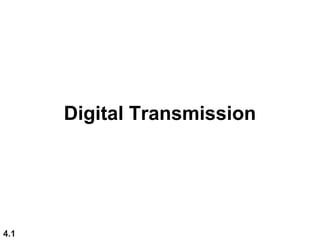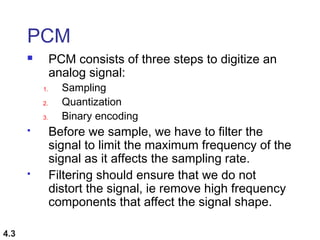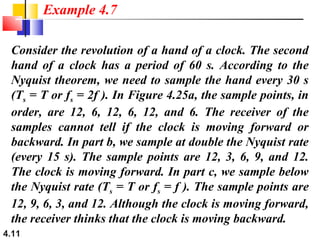This document discusses digital transmission through analog-to-digital conversion techniques like pulse code modulation (PCM) and delta modulation. It describes the key steps of PCM: sampling the analog signal at regular intervals, quantizing the sampled signal amplitudes into discrete levels, and encoding the quantized levels into binary code. The sampling rate must be at least twice the highest signal frequency to avoid aliasing, as per the Nyquist theorem. Quantization introduces approximation errors that can be reduced by using more levels, though this increases the required bit rate. PCM allows digital transmission of signals in a noise-robust way, though it requires more bandwidth than direct analog transmission.



























